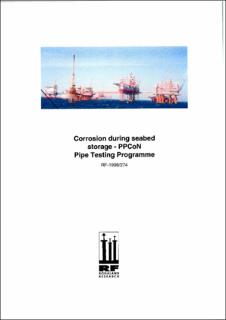| dc.description.abstract | Seabed storage of production pipelines is a controversial issue. Treatment versus no treatment during seabed storage, and exactly how long a "safe storage period is" etc., were questions difficult to answer. The scope of this project was to conduct a field test, in large scale, to try to tind answers to the preceding questions, and try to recommend a safe period for a no treatment option. By placing pipe samples on the seabed at the Ekofisk area, and monitoring the chemical changes in the confined pipe-water as well as examining the infested steel surface during a period of nine months, the aim was to collect sufficient data to better understand the changes that take place in-situ. Chemical, electrochemical and biological parameters were monitored to facilitate a multidisciplinary explanation for the changes that were observed. | en_US |
